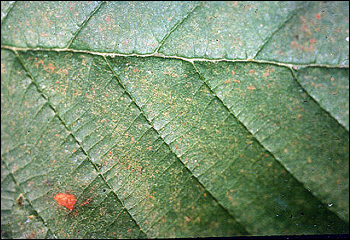We know ozone mainly from the information about the ozone layer in the stratosphere, where it is essential and important as a barrier to the penetration of ultraviolet radiation, radiation that is harmful to life and plants. But, in the lower layers of the atmosphere, in the troposphere, at ground level, ozone is a poison

O3, a molecule that consists of three oxygen atoms is known as ozone. We know ozone mainly from the information about the ozone layer in the stratosphere, where it is essential and important as a barrier to the penetration of ultraviolet radiation, radiation that is harmful to life and plants. But, in the lower layers of the atmosphere, in the troposphere, at ground level, ozone is a poison.
Ground ozone is created when sunlight acts as a catalyst for a chemical reaction between fuel products and nitrogen oxide - which comes mainly from vehicle exhaust gases, meaning that most ozone is created as a result of burning mineral fuel.
The World Health Organization stated that: "The negative effect of ozone is when its concentration is higher than 50 parts per billion (ppm)" but research by the Royal Society stated that negative effects were already seen at a level of 35 ppb. According to the European Environment Agency 21,000 cases of death (in the European Union) per year are related to ozone poisoning.
The effect on vegetables and other major agricultural crops is already visible in 40 million, it is estimated that in 2000 ozone caused damage to agricultural crops which resulted in a loss of approximately 9 billion dollars, in the European Union alone.
Ozone concentrations at ground level continue to rise despite regulations that are supposed to regulate the reality of the gas. According to a study conducted by the Royal Society, the UK national academy of science, the negative effect of ozone on the health of the human population is multiplying, so is the negative effect of ozone on agricultural crops. What was once considered a local phenomenon turns out today to be a pollutant on a global scale. In most industrialized countries, the concentration of ozone has increased by 2 parts per million since 1980 and reached a level of 35-40 ppm, a level that is considered dangerous and harmful.
In order to prevent damage to health and damage to agricultural crops, there is a need for a global convention that will reduce the amounts of ground ozone. Research has shown that if there is compliance with existing regulations, it is possible to lower ozone concentrations to 15 ppm by 2050, but in developing countries, there are few regulations and supervision is low, so it is expected that by 2050 the levels will rise by about XNUMX ppm.
Since the harm is not only a direct harm but also harm to agricultural crops, that is, harm to the food supply to the population, it is important that governmental and other official bodies act to prevent an increase in the concentration of the poison in our environment.

8 תגובות
Azone is a strong oxidizer which in turn reacts with organic matter to release free radicals which are even stronger oxidizers. In humans, it damages the mucous membranes in the respiratory tract and the lungs and causes suffocation in very low concentrations, but by and large it simply oxidizes organic matter, in fact, "burns it".
How is ozone harmful to the body and plants?
The standard in the laboratory for the concentration of nitrogen monoxide NO was until a few years ago 30 PPM. In the measurements we made over a bridge while cars were moving, we managed to measure 150. The standards are very strict and rightly so. The panic created around them is a little exaggerated.
Error in the units, the intention is of course 50 parts per billion not per million! Just to explain the ear, my maximum exposure standard for ozone is 0.1 parts per million for 8 hours, 50 parts per million is not the concentration in the air God forbid, at such a concentration the average person will not survive more than half an hour.
rummy! Doesn't it make sense to you that the ground ozone reaches the ozone layer due to its specific gravity?
In my opinion, the effect of ozone on the reactant is much more serious, it becomes orange and hairy like the leaf
To the commenter, the article talks about the ground ozone and not the ozone in the atmosphere. In my opinion, there is nothing to do with the ozone layer in this case.
This could explain the fact that since the 90s, the hole in the ozone has been closing